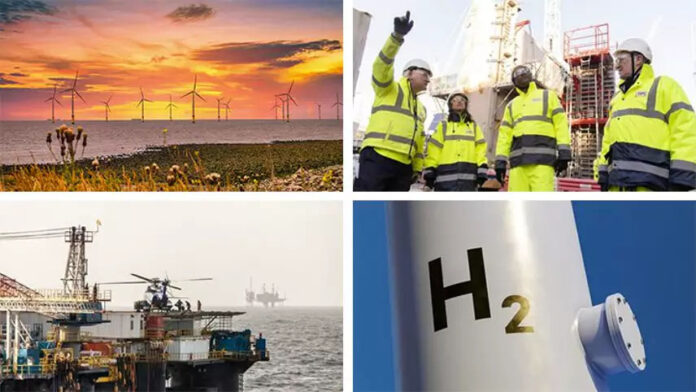Every day we wake up to a new wave of inflation in our country. With each passing day, it is becoming more and more difficult for the average Pakistani to survive this continuously rising storm of inflation as the country inches closer and closer to the state of hyperinflation. Currently, Pakistan is facing both Climateflation and Fossilflation. Inflation in a large number of economic sectors in Pakistan can be directly or indirectly attributed to the phenomenon of Climateflation which is the direct effect of climate change on the price level via its destructive physical impact on infrastructure and the production of goods.
An example of this are the rising food prices in Pakistan resulting from the floods which destroyed a vast proportion of the country’s agricultural land and its output. The other inflation battle that our country has been fighting for the past several decades is Fossilflation where food and energy prices go up because our whole system depends on fossil fuels like oil and gas, which are both dangerous for the environment and unpredictable regarding costs. Both Climateflation and Fossilflation are predecessors of Food Inflation. When approached through a holistic perspective the various types of inflation plaguing our economic system are interconnected and thus can be solved simultaneously and through complementary strategies.
For example, renewable energy sources are more capital-intensive than fossil fuels, which means they have much larger upfront costs and thus face higher funding costs. Greenflation is the increase in prices of goods and services or inflation as a result of the transition of the current economy to a green economy. It must be understood that for Pakistan the transition towards a Just and Green Ecosystem is synonymous with survival but the longer we take to make this transition the more cost-intensive it will become for us. Pakistan is already far behind in the journey of sustainable development and the effects of Greenflation will be intensified the longer we operate under the business-as-usual scenario
Many debates have been held and are still going on regarding the factors or actors behind the country’s catastrophic economic condition. But let us shift our focus towards the solution or the remedy to this situation and possibly a vaccination which may serve to protect our economy or lessen the impacts of any future inflationary shocks. The solution to several challenges being faced by Pakistan lies in a Just And Green Transition. According to the International Labour Organization (ILO) a Just And Green Transition means greening the economy in a way that is as fair and inclusive as possible to everyone concerned, creating decent work opportunities, and leaving no one behind.
The financial system of an economy is the major driving force behind any transition and the transition towards a Just And Green economy is no different. In the aftermath of the Global Financial Crisis of 2008, a strong consensus emerged from all stakeholders that a majority of financial institutions had engaged in too many short-term harmful financial activities without any underlying positive environmental and social purpose. It was realized that an environmentally, socially, and economically just society is not possible without the financial sector fundamentally reconsidering its strategies, operations, and activities, and aligning them with more ecologically and socially purposeful, longer-term aims and objectives delivering greater economic and social value.
The creation of a Just And Green Economic system can also serve as a remedy towards Pakistan’s economic woes and a vaccination for future inflationary shocks. The banking industry, as a major player in a country’s economy, can also play a role in encouraging and incentivizing firms or industry sectors to decarbonize through sustainable and green financing.
The choices made by the banking sector will play a major role in shaping the economy, environment, and society, in the years to come. In most cases, the time horizons in which financial institutions make decisions are often too short to consider the long-term environmental or social effects of the financing portfolio. In Pakistan, this short-termism is often intensified by the pressure to deliver positive economic returns to shareholders. This can discourage banks from investing in sectors that offer long-term value rather than short-term gain and encourage them to discount the long-term risks of their activities, which often include environmental risks. Short-termism has particularly significant implications for responding to the climate challenge. While the worst impacts of climate change will most likely be felt by future generations, the measures needed to avoid catastrophic climate change and its impact on individuals, communities and the financial system are required urgently.
Thus, the banking sector needs to realign its ideology towards Green Banking in order to create a distinction between ‘green’ and ‘brown’ financing portfolios. Industries globally accepted as ‘green’, mostly include renewable energy production, distribution, and storage; energy efficiency in domestic and industrial buildings; green transport; recycling; sustainable and climate-smart agriculture; pollution prevention; water conservation; circular economy initiatives and forestation. The Pakistan banking industry can provide green and sustainable financing to these industries in order to facilitate the economy’s transition to a Just and Green system which will in turn neutralize a number of factors causing inflation. Green financing can nurture the development of the Sustainable and Climate Smart Agricultural sector in Pakistan.
The Pakistan banking industry has a long way to go before green and sustainable finance achieves the mainstream scale and effectiveness necessary to address our biggest environmental and societal challenges. During the journey towards a Just and Green economy, we must also not forget the phenomenon of Greenflation. Contrary to the popular belief of green alternatives being cheaper, the concept of Greenflation explains that the transition from the traditional economic system to a net-zero economy, although beneficial on many fronts, is in fact initially cost intensive.
For example, renewable energy sources are more capital-intensive than fossil fuels, which means they have much larger upfront costs and thus face higher funding costs. Greenflation is the increase in prices of goods and services or inflation as a result of the transition of the current economy to a green economy. It must be understood that for Pakistan the transition towards a Just and Green Ecosystem is synonymous with survival but the longer we take to make this transition the more cost-intensive it will become for us. Pakistan is already far behind in the journey of sustainable development and the effects of Greenflation will be intensified the longer we operate under the business-as-usual scenario.























